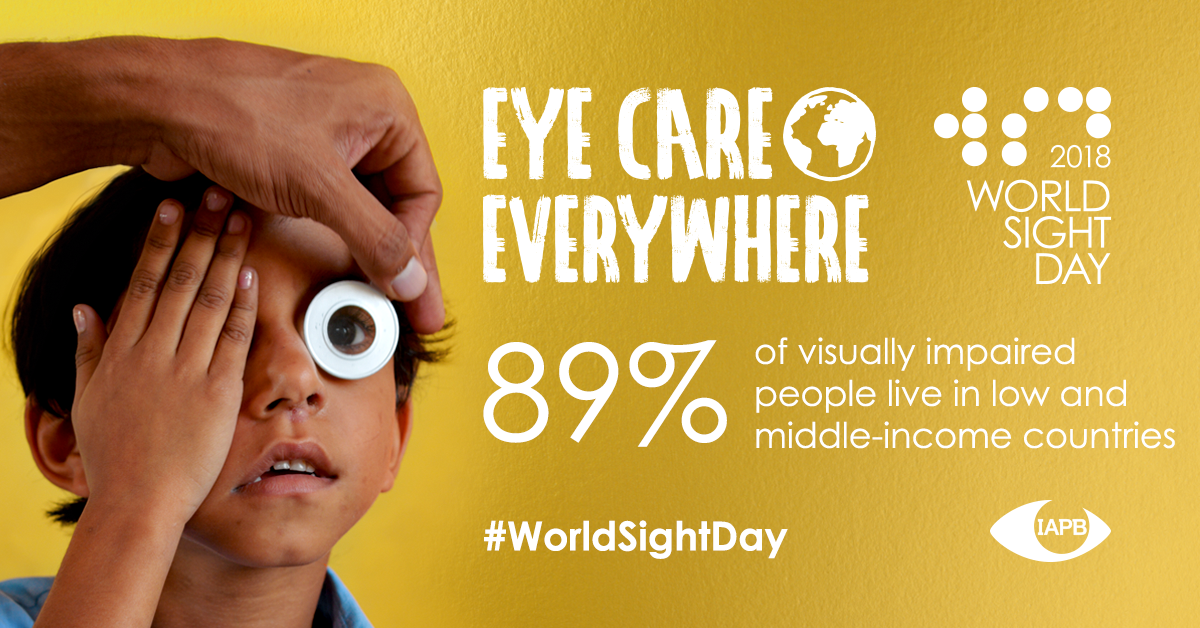There are nearly 1 billion people globally with near-vision impairment and it is estimated that 1 in 5 children wear glasses in the UK today. Children can be prescribed glasses for many reasons: refractive error, photophobia or for safety. Poorly fitting glasses can cause a reduction in visual acuity (potentially permanently), discomfort, or in some cases, even disfigurement. Despite this, how often do we see children come into our practice with glasses that are not fit for purpose?
Some of the issues that you might encounter include glasses that slip down causing the patient to look over the top, glasses with drops that are so long they won’t fit in the spectacle case, glasses that leave ridges down the side of a patient’s head, curl-sides pulling ears forward and out, or bifocal segments (Down’s syndrome, cataract patients) that are ridiculously small or too large.
In consideration of World Sight Day (11 October), I thought it valuable to discuss proper paediatric dispensing.
Proper paediatric dispensing requires extremely effective communication, endless patience, and a specialist’s knowledge. Children do not have scaled down adult faces - they have unique facial characteristics that should be reflected in the choice of frame. Children are growing, I don’t believe it is appropriate to fit them with a pair of glasses they “Will grow into,” so regular checks and fits are necessary. In addition, we need to consider other factors such as UV protection, durability and safety. Children are often a lot tougher on their glasses that adults, so the frame and lenses need to be able to withstand the knocks they are bound to encounter, without any risk of facial trauma to the patient. Approximately 1 in 3 cases of eye injuries sustained during sporting activities involve a child. It is thought that nearly 90% of these cases could be avoided by wearing the appropriate eye protection.
Of late, glasses have become more of a fashion accessory for children. Whilst this is great for encouraging children to wear their glasses, is there truly enough awareness amongst parents and caregivers of how important the fit is, rather than the label on the side? Part of our job should be to inform parents on the importance of a good fit, the issues associated with a poor fit, and what a well-fitting pair of glasses should look like. Parents and caregivers play a crucial role in the dispense. They should encourage the patient to wear the glasses and they should bring the patient back to see you when the glasses need adjusting.
Dispensing for children is a highly skilled competency, but if done well, it can be one of the most rewarding parts of our job. We are very lucky to be able to witness and help a child to see the world clearly for the first time with their new glasses. As practitioners, we should be ensuring that every pair of glasses we give to a child are dispensed to the highest possible standard in order to achieve the best comfort, appearance, and most importantly, the best visual outcome.
About the author:
Jessica Gowing is currently Senior Dispensing Optician at Great Ormond Street Hospital (GOSH). She set up the dispensing service in June 2014 and has since become a specialist in paediatric dispensing. Jessica works as part of a multi-disciplinary team along with optometrists, ophthalmologists and orthoptists to develop a specialist service for children with a wide range of conditions and complex prescriptions. GOSH is one of only four craniofacial units in the UK. Part of Jessica’s role involves dispensing to children with all types of ocular, facial and head shape abnormalities requiring specialist spectacle fitting. Examples of conditions treated at GOSH which require modified or bespoke spectacles include epidermolysis bullosa, craniosynostosis and microtia.
